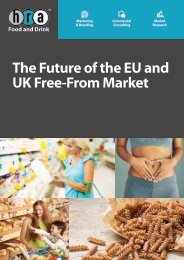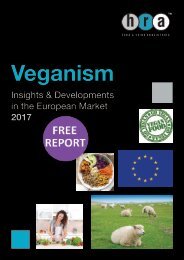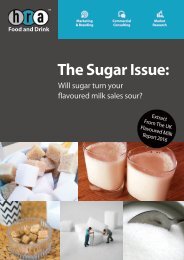Flavoured_Milk_Free
The backdrop to the UK flavoured milk market is one of relentless change. The removal of the EU milk quotas, the transition by emerging economies to a Western-style diet, the upcoming introduction of the ‘sugar tax’ and the booming sports nutrition industry are all aspects of change that create both challenges and opportunities for the UK flavoured milk market. HRA Food and Drink has developed this report as a map to guide industry stakeholders. Although volume growth in 2014 was slightly lower than in previous years, the flavoured milk market still has plenty of room for product innovation in the future.
The backdrop to the UK flavoured milk market is one of relentless change. The removal of the EU milk quotas, the transition by emerging economies to a Western-style diet, the upcoming introduction of the ‘sugar tax’ and the booming sports nutrition industry are all aspects of change that create both challenges and opportunities for the UK flavoured milk market.
HRA Food and Drink has developed this report as a map to guide industry stakeholders. Although volume growth in 2014 was slightly lower than in previous years, the flavoured milk market still has plenty of room for product innovation in the future.
Create successful ePaper yourself
Turn your PDF publications into a flip-book with our unique Google optimized e-Paper software.
UK FLAVOURED MILK MARKET 2017 & BEYOND<br />
juice, it is often the lower sugar option. It is also the option containing the<br />
highest level of protein and fat, meaning it is also the most satiating option.<br />
2.2 <strong>Milk</strong> treatment and nutrition<br />
Cows’ milk frequently undergoes three kinds of heat treatment to extend it’s<br />
shelf life:<br />
Sterilisation<br />
<strong>Milk</strong> heated at temperatures above 100ºC to<br />
eliminate micro-organisms.<br />
Ultra High<br />
Temperature (UHT)<br />
To view please<br />
purchase full report<br />
<strong>Milk</strong> heated to 138ºC for 2-3 second in a closed<br />
system.<br />
Pasteurisation<br />
<strong>Milk</strong> heated to 74ºC for 15-20 minutes before<br />
cooling and packing.<br />
Figure 2.3: Different heat treatments in cows’ milk processing (FAO 2013)<br />
Heat treatments are used to eliminate micro-organisms from liquid milk,<br />
meaning it has a longer shelf life. However, heat treatments have a negative<br />
effect on nutrients (see figure 2.4):<br />
To view please<br />
purchase full report<br />
Figure 2.4: Different heat treatments and associated vitamin loss in cows’ milk (FAO<br />
2013 pp. 72)<br />
All rights reserved, ©Teepee Ltd, t/a HRA Food & Drink: 2016<br />
to 2017<br />
17







